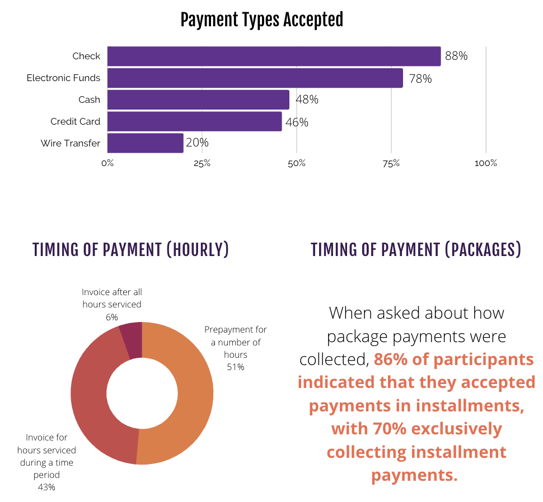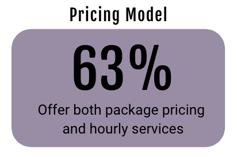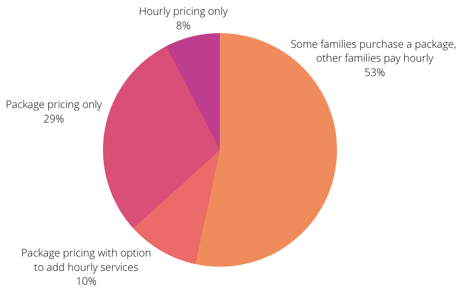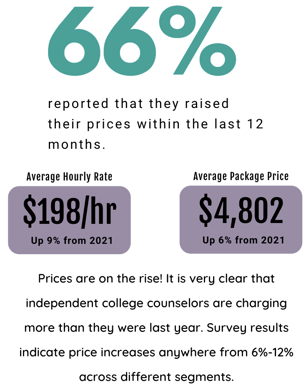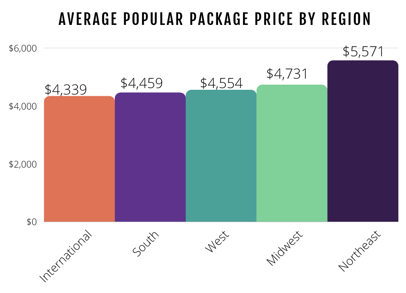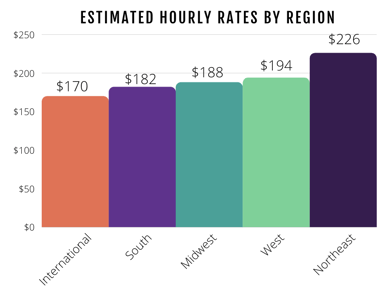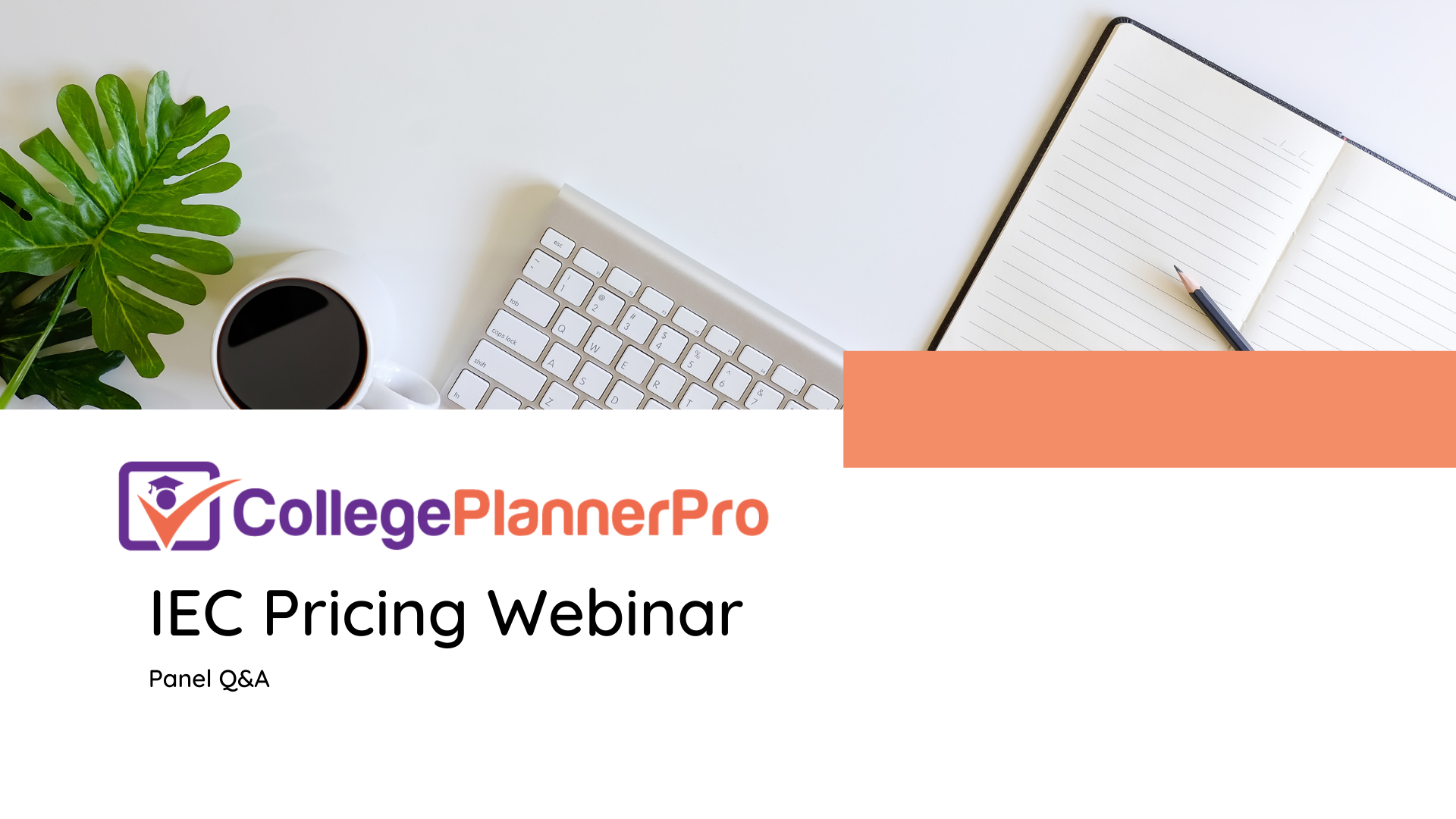
The CollegePlannerPro team was joined by four IECs for a transparent conversation regarding the pricing of college consulting services. During the insightful conversation, our panelists shared their experiences and opinions and attendees chimed in with questions and commentary. The CollegePlannerPro team shared relevant data from the results of our IEC pricing survey.
We recapped our conversation and provided a link to the full webinar recording below. Please feel free to add your own thoughts, experiences, or further questions in the comments!
Our Panelists
Amy Goldin, COPA, Inc.: College Options in the Performing Arts
Jeff Levy, Big J Educational Consulting
Julie Mitchell, The College Map
Stacy Havens, JWK College Counseling
Question 1: In your opinion and experience, what are the pros/cons of different pricing models?
Amy: When she started her practice she began by offering a comprehensive package, however, because she works with students in all different regions, even internationally, she needed to be able to charge differently for different clients. Her work also focuses on students pursuing the arts and the level of support varies greatly between students based on the discipline they're focused on. This moved her to an hourly model and eventually to smaller packages based on the number of hours worked. If you find that your student caseload is as unique as Amy's, you may benefit from the flexibility that an hourly pricing model affords.
Jeff: Explained that parents often don't understand what they need and do not need in terms of college counseling services, and therefore it was confusing to offer a pricing structure based on specific tasks. He also finds that a comprehensive pricing model can lend itself to families unintentionally taking advantage of time. This is why Jeff urges counselors to track their time to account for the work they are billing for.
Julie: As a larger practice, comprehensive package pricing helps to simplify pricing and payment collection.
Question 2: How do you handle raising rates?
Amy - When she was finishing her certificate she didn't know what she didn't know. She ended up pricing herself originally as a private voice teacher but has since aligned herself with the pricing that most IECs are reporting. She has changed pricing through the years and updated her pricing to be competitive in comparison to the industry and regional averages.
Julie - She has gone through two price increases over 8 years. Every year her team does a competitive analysis of their region to ensure their pricing is competitive but they’re also exceeding them in terms of quality of service.
Jeff - Due to the era of virtual meetings that the COVID pandemic ushered in, he found that his client base expanded bc it’s now easier to work with students all over the world. He hypothesized that there will be a democratization of pricing because of this and pricing will probably go from less regional and more national. He did keep pricing the same during COVID to avoid making a financial hit on families in the middle of that. Once the initial hardships of COVID were over, they felt comfortable raising prices. He suggested not only keeping up with inflation but also moving ahead - if not, you’re falling behind.
Stacy - She and her business partner have slightly different prices due to their different experience, but still priced very competitively.
Question 3: Do you/should you charge differently for different regions/markets?
Most of the panelists touched on this question in previous responses, stating that they are aware of the regional pricing differences currently apparent and do take these into account when setting their own prices, the prices of their colleagues in other regions, and prices for individual families.
The CollegePlannerPro team was asked about how both region and years of experience impact pricing. We present each separately in our pricing survey results, however, we went further and brought both of these elements into the below charts.
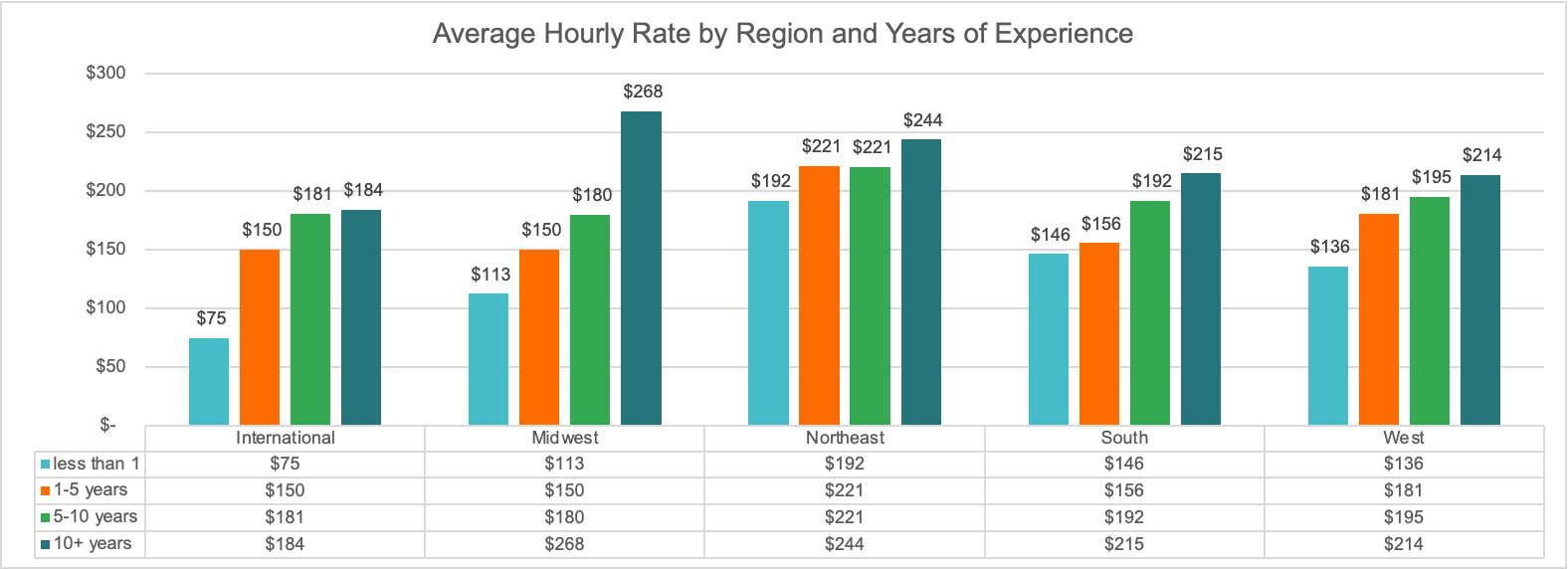

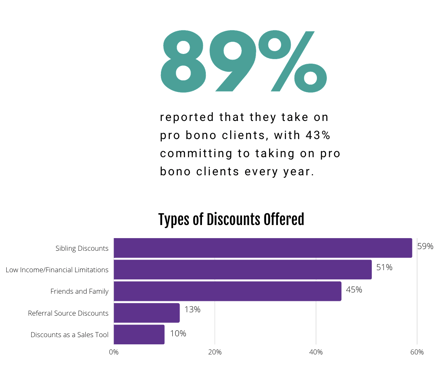
Question 4: Do you offer discounts, sliding scale pricing, and/or pro bono services?
Amy - They have created their own scholarship for low-income students. These students are usually referred by CBOs or performing arts teachers. Students have to fill out an application in which they write 2 short essays. She takes on 3 pro bono/low-income students a year.
Julie - She commits to working with 3 pro bono students per year. The students are typically direct referrals from her contacts at a local school district. She does not offer a sliding scale, however, they are honoring 2019 prices currently for families who were contracted via siblings.
Question 5: What services fall into add-on services for you and how do you bill for them?
Julie - The comprehensive package includes applications for up to 12 schools. Essay workshops and boot camps are all built into their package. Anything falling outside of this is not included in the comprehensive package rates.
Question 6: Best practices/tools for collecting payment?
Jeff - “I don't want to owe them time and I don't want to be owed money.” This is why he likes accepting payments in installments that are aligned with the delivery of services. He’s somewhat uncomfortable taking all the money up-front in case something happens to him throughout the course of the relationship.
Julie - She takes a 10% deposit upfront to cover all that goes into onboarding costs. She does also offer a 5% discount should families pay in full upfront.
Stacy - She receives payments from families on a quarterly basis and takes the first payment up-front to start services. Because they have a small practice, this works best for them. As a parent, she remembers wanting to be able to pay in installments, and she finds that other parents like this best as well. It lets people know they can cancel the relationship if they want or need to.
